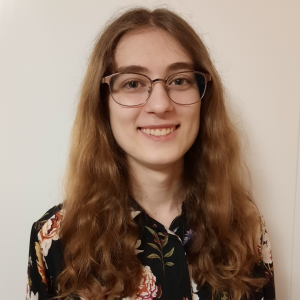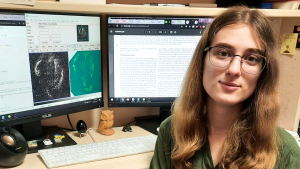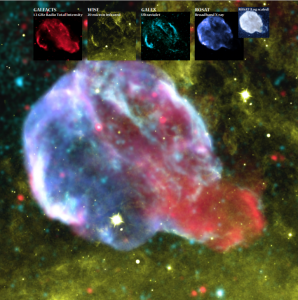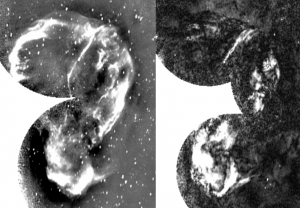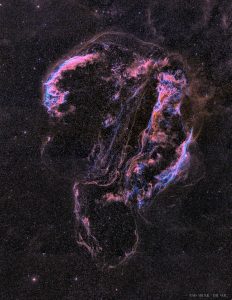Nicole just completed her undergraduate studies at the University of Toronto with a double major in Astronomy and Physics and a minor in Chemistry. Living in Mississauga, she studies the polarization of supernova remnants at radio wavelengths alongside supervisor Dr. Jennifer West.
What made you decide to participate in SURP?
SURP is the perfect opportunity for students to dip their toes into what it feels like to do research, while getting first-hand experience in a supportive environment, working alongside world-renowned academics. Combine that with so many fascinating research projects to choose from and learning research skills beyond those which you learn in the classroom, and the choice was clear for me.
What is your favourite thing about SURP?
The people within the Astro community at U of T are absolutely delightful. Everyone has been incredibly friendly throughout my time here and their passion shines through in what they do. It’s inspiring to be able to learn from them and you meet so many people you otherwise would have never gotten the chance to. Most of all, Dr. West as my supervisor and mentor has been nothing but wonderful in supporting and encouraging me, as well as answering my many, many questions in an insightful manner.
Can you tell us about your research project?
Of course! My research project focuses on one supernova remnant in particular, called the Cygnus Loop. We’re interested in its magnetic field structure, which we measure using Faraday rotation based on the polarized synchrotron radiation that’s being emitted. Synchrotron emission is brighter at lower frequencies so different features will be visible in different wavelength ranges. To make use of this, we study data taken using several telescopes, such as LOFAR, DRAO and Arecibo. Based on the radio polarization data, we’re investigating the exciting hypothesis that the southern breakout region is actually a second supernova remnant. Next, we plan on generating a spectral index to determine whether the relation between brightness and frequency differs significantly between the northern and southern regions, which would further support the double supernova remnant possibility.
Can you explain how SURP has perhaps been different from your undergrad work?
Throughout most of my time as an undergraduate, the focus was on learning the theory and doing the rigorous math that followed. However, in my experience here, the math is replaced with code and the best method to solve a problem isn’t always as straightforward. You have much more freedom to work on the project how you see fit. To be honest, this was a strange mentality to adapt to, having been used to the rigidity and deadlines in typical undergraduate courses. You explore the possibilities, you follow a lead and sometimes it doesn’t pan out. But when you do finally make a breakthrough, it feels amazing. Furthermore, the projects that are taking place within SURP aren’t just lab reports that have been done thousands of times before, but rather something that is actively contributing to the scientific community as a whole.
What are your plans for the future?
The exposure to research through SURP has inspired me to delve further into my understanding of astronomy. In the next few years, I’d like to explore my research interests and hope to pursue graduate studies in astronomy, doing either data analysis or observational work. If you want to know for certain though, you’ll have to find me again in 10 years.

